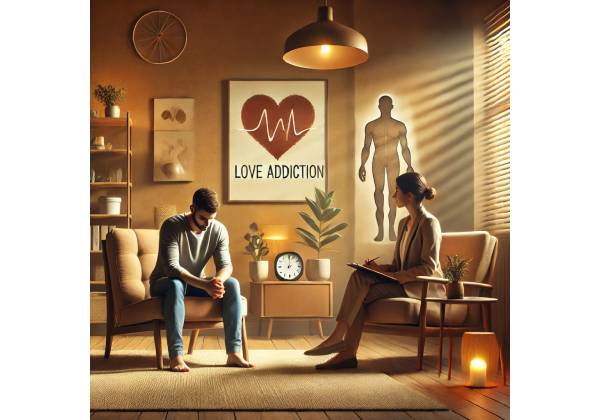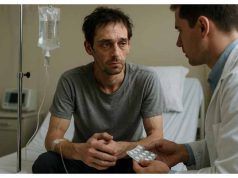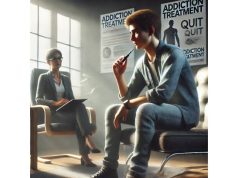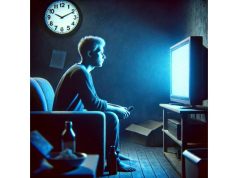
Rom-coms glamorize breathless infatuation, yet for some people the chase for romantic intensity turns into an all-consuming cycle of highs and crashes that feels eerily like substance dependence. When the thrill of new love overrides judgment, disrupts work, and leaves a trail of turbulent break-ups, you may be looking at Love Addiction—a compulsive pattern of seeking, clinging to, or fantasizing about relationships despite mounting harm. This comprehensive guide unpacks why love can become addictive, how to spot the early warning signs, and—most importantly—how to cultivate healthy, balanced bonds that last longer than a honeymoon phase.
Table of Contents
- Mapping the Landscape and Commonality
- Origins and Predisposing Dynamics
- Telltale Behaviors, Emotional Clues, and Evaluation
- Life, Body, and Mind: Ripple Effects
- Proven Interventions and Journey Back to Healthy Love
- Frequently Asked Questions
Mapping the Landscape and Commonity
What exactly is love addiction?
At its core, love addiction (sometimes called relationship addiction or pathological love) describes a persistent, uncontrollable need for romantic or emotional intensity that eclipses reason and well-being. Unlike a healthy desire for connection, love addiction centers on the high—the intoxicating cocktail of dopamine, oxytocin, and adrenaline released in early infatuation. When that neurochemical surge fades, the love-addicted person often feels anxious, empty, or even panicked, prompting frantic efforts to rekindle intensity or chase a brand-new relationship.
How common is it?
Research is still emerging, yet community studies suggest 3 – 8 percent of adults meet proposed diagnostic criteria, with higher rates (up to 15 percent) in dating-app power-users and populations with prior mood or anxiety disorders. Love addiction isn’t officially recognized in the DSM-5, but clinicians increasingly frame it within behavioral addictions and attachment pathology.
Modern drivers of prevalence
- Swipe culture: Infinite dating options create constant novelty, mirroring slot-machine reinforcement.
- Social-media highlight reels: Curated couples’ photos fuel unrealistic expectations and comparison.
- Instant messaging: 24/7 access accelerates bonding, often before true compatibility is tested.
- Pandemic isolation aftershocks: Loneliness during lockdown sparked a surge in rapid online attachments, some of which hardened into dependency patterns.
Demographic notes
- Gender distribution: Women more often report obsession with romantic fantasy and fear of abandonment; men may manifest through serial conquests or sexual compulsivity.
- Sexual orientation: Love addiction cuts across orientations, though minority stress can intensify attachment anxieties.
- Age trends: Peaks appear in early adulthood (18 – 30) yet midlife divorces sometimes trigger a second spike as individuals seek validation.
In short, love addiction thrives where high novelty, fast feedback loops, and underlying emotional wounds intersect—a perfect storm in the digital-dating era.
Origins and Predisposing Dynamics
Love addiction rarely appears out of the blue. It’s usually seeded by a mesh of neurochemistry, early attachment experiences, personality traits, and cultural scripts.
Brain chemistry that craves the chase
| Neurochemical | Role in infatuation | Why it fosters dependency |
|---|---|---|
| Dopamine | Produces euphoria and motivation during new attraction | Repeated spikes reinforce partner or pursuit as the “reward cue,” driving compulsive focus |
| Oxytocin & Vasopressin | Deepen bonding and trust | When attachment breaks abruptly, withdrawals mimic physical pain, prompting urgent reconnection |
| Norepinephrine | Generates excitement and alertness | Heightens memory for emotional moments, making lovers unforgettable triggers |
Attachment blueprints from childhood
- Anxious-preoccupied style: Caregivers were inconsistent; adult partners now feel like emotional lifelines.
- Avoidant style (with love-addicted overlay): Person longs for closeness yet fears engulfment, oscillating between pursuit and sabotage.
- Disorganized attachment: Childhood trauma creates confusion over safety and intimacy, leading to chaotic, addictive relationship cycles.
Personality and psychological factors
| Trait or condition | Contribution to love addiction | Counter-practice |
|---|---|---|
| Low self-esteem | Relationships become primary source of worth | Daily self-validation rituals (affirmations, mastery activities) |
| Impulsivity/ADHD traits | Chase novelty; struggle with delayed gratification | Mindfulness training, structured decision delays |
| Unresolved trauma | Romantic intensity masks emotional pain | Trauma-focused therapy (EMDR, somatic experiencing) |
| Fantasy proneness | Daydreams replace realistic assessment | Reality testing: journaling facts vs. fantasies |
Socio-cultural scripts
- “Soulmate” mythology: Media portray one true perfect partner, discouraging healthy detachment and boundary-setting.
- Performance pressure: Constantly prove relationship happiness online, fostering dependency on external validation.
- Hookup-to-relationship pipeline: Rapid sexual intimacy can shortcut emotional discernment, amplifying chemical bonding.
Understanding these roots isn’t about blame—it’s about mapping where change can occur: rewiring brain responses, healing attachment wounds, and rewriting scripts.
Telltale Behaviors, Emotional Clues, and Evaluation
Behaviors that flag potential addiction
- Serial relationships with minimal single time; new partner always in cue
- Obsessive texting/checking for messages or social-media updates from crush
- Neglect of responsibilities (work, studies, parenting) to maintain contact
- Repeated tolerance of abuse or incompatibility, fearing singlehood more than harm
- Craving “spark” so intensely that stable phases feel intolerably dull
Inner experience checklist
| Emotional state | Love-addicted reaction |
|---|---|
| Euphoria | Extreme highs on small signs of interest—heart racing, insomnia |
| Anxiety | Panic when partner delays reply or suggests space |
| Despair | Intense emptiness after breakup, sometimes leading to obsessive pursuit or rapid replacement |
| Guilt/Shame | Self-blame over losing control yet feeling unable to stop |
Self-assessment exercise: “Relationship Inventory”
- List last five relationships (or crushes).
- Note duration, reason for ending, and time gap before next.
- Highlight any patterns: overlapping partners, repeating red-flag dynamics, escalation in intensity.
- Rate (0-10) how much each relationship interfered with sleep, finances, friendships, or career.
If interference scores rise over time, or gaps between relationships shrink below two months consistently, consider professional evaluation.
Proposed diagnostic criteria (emerging consensus)
Many clinicians adapt substance-use metrics:
- Persistent desire or unsuccessful efforts to cut back dating-app time or partner contact
- Excessive time spent planning, pursuing, or recovering from relationship activity
- Continued involvement despite physical danger or severe social/occupational impairment
- Withdrawal-like distress (insomnia, agitation) when single or separated
- Tolerance observed as need for more intense partners or riskier situations to achieve excitement
Formal diagnosis still varies, but these markers help guide treatment planning.
Life, Body, and Mind: Ripple Effects
Love addiction isn’t merely an emotional roller coaster; it can echo across nearly every life domain.
Physical and neurological toll
- Stress-hormone surges: Chronic cortisol spikes from constant relational anxiety can impair immunity, seed hypertension, and trigger migraines.
- Sleep disruption: Late-night texting, doom-scrolling ex profiles, or post-breakup rumination erode REM cycles, impacting memory and mood.
- Appetite swings: Some individuals overeat “comfort food,” others lose hunger entirely during relational turmoil—both upset metabolic balance.
- Somatic complaints: Heart palpitations, digestive issues, and tension headaches often parallel attachment distress.
Cognitive fallout
| Challenge | Manifestation | Real-life impact |
|---|---|---|
| Attention hijack | Mind drifts to partner despite deadlines | Work errors, missed instructions |
| Distorted thinking | Idealization or demonization with little nuance | Whiplash decisions: moving in too fast, sudden breakup |
| Rumination loops | Replaying conversations, stalking social media | Lost hours, impairing productivity |
Emotional and social consequences
- Friendship erosion: Constant cancellation or one-topic conversations exhaust social circle.
- Isolation: Partners become sole support pillar; post-breakup, the person feels adrift.
- Financial strain: Lavish gifts, impulsive relocations, therapy costs for crisis cycles.
- Parenting disruption: Emotional availability to children plummets during relationship drama.
Occupational and academic costs
- Absenteeism: Taking long lunches to track partner or skipping class after fights.
- Burnout: Energy diverted to relationship management leaves little for creative problem-solving.
- Reputation hits: Public break-ups on social media or office flings damage credibility.
Quick grounding tool: When S.O. obsession spikes, practice “5-4-3-2-1” mindfulness—identify five things you see, four you feel, three you hear, two you smell, one you taste—to pull focus back to the present moment.
Proven Interventions and Journey Back to Healthy Love
Love addiction recovery centers on building secure self-worth, learning balanced intimacy skills, and rewiring reward circuits.
Therapeutic frameworks
| Approach | Core elements | Ideal for |
|---|---|---|
| Cognitive-Behavioral Therapy (CBT-LA) | Identify love myths, challenge catastrophic thoughts, practice dating abstinence periods | Individuals with recurrent break-up cycles |
| Attachment-based therapy | Explore childhood bonds, develop secure internal working models | Those with anxious or disorganized attachment |
| Dialectical Behavior Therapy (DBT) | Emotional-regulation, distress-tolerance, mindfulness | High impulsivity, self-harm risk during breakups |
| Schema Therapy | Rewrites deep-seated beliefs (“I am unlovable”) via limited re-parenting and experiential tasks | Chronic emptiness, repeating toxic partners |
| Group programs (e.g., Sex and Love Addicts Anonymous) | Peer support, 12-step structure, accountability | Need for community and shared language |
Pharmacological aids
There is no “anti-love” pill, yet medications sometimes support recovery:
- SSRIs or SNRIs: Dampen obsessive rumination, ease co-morbid depression/anxiety.
- Naltrexone: An opioid-receptor antagonist explored to reduce reward from compulsive romantic fantasies (research ongoing).
- ADHD stimulants: Improve impulse control for those with diagnosed ADHD.
Any prescription should follow thorough assessment by a qualified clinician.
Practical self-management blueprint
- 90-day relationship detox: Commit to singlehood, focus on self-care, track triggers.
- Boundaries 101: List non-negotiables (respect, time for hobbies) and practice asserting them in platonic settings first.
- Slow dating rules: Minimum three weeks and five offline dates before exclusivity; avoid marathon texting.
- Joy portfolio: Curate five non-romantic rewards (dance class, volunteering, hiking) to fill dopamine gap.
- Digital hygiene: Disable “seen” receipts, schedule social-media windows, mute exes’ updates.
Relapse-prevention plan
- Trigger map: Identify early warning signs—fantasy spirals, loneliness evenings, certain music.
- Emergency kit: Therapist-approved grounding exercises, friend contacts, uplifting podcast queue.
- Progress log: Weekly reflection on mood, urges, victories; celebrate micro-wins (turned down 2 a.m. booty call).
- Accountability buddy: Share goals and setbacks; honest check-ins keep rational brain engaged.
Success stories snapshot
Many former love-addicted individuals find that after six months of focused therapy and self-work they can:
- Enjoy dating pace without anxiety spikes
- Respect “no contact” boundaries post-breakup
- Maintain hobbies and friendships as relationship equals
- Recognize chemistry without conflating it with compatibility
Recovery swaps obsession for authentic connection—where love enhances life instead of devouring it.
Frequently Asked Questions
Can love really be addictive?
Yes. Intense infatuation triggers brain reward circuits similarly to drugs; when someone relies on that high for self-worth, the pattern can become addictive.
How is love addiction different from just being passionate?
Healthy passion enhances life and respects boundaries. Love addiction persists despite clear harm, involves loss of control, and feels panic-stricken when separated.
Do I have to stay single forever to recover?
No. Temporary dating breaks help reset patterns, but long-term recovery focuses on balanced, secure relationships—not perpetual celibacy.
Are there medications that stop obsessive crushes?
While no drug cures love addiction, SSRIs can soften rumination, and therapies remain the primary treatment.
Can couples therapy fix love addiction?
Couples work can help if both partners commit, yet individual therapy is usually necessary to address personal attachment wounds first.
How long does treatment last?
Initial gains often emerge within three months; deep pattern change typically requires six to twelve months, with booster sessions as needed.
Disclaimer
This article is for informational purposes only and does not replace professional medical or mental-health advice. Always consult qualified clinicians regarding any emotional or relational concerns.
If you found this guide helpful, please share it on Facebook, X (formerly Twitter), or your favorite platform, and follow us for more evidence-based wellness content. Your support fuels our mission to produce high-quality resources—thank you!










